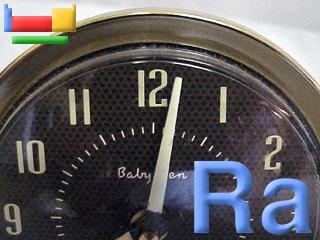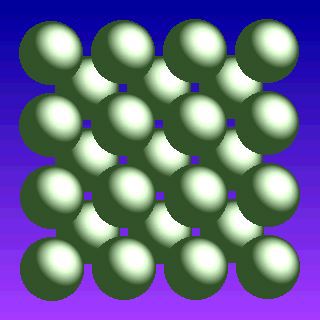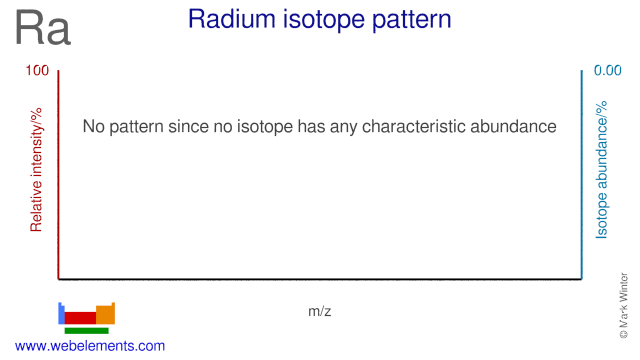Radium - 88Ra: the essentials
- Name: radium
- Symbol: Ra
- Atomic number: 88
- Relative atomic mass (Ar): [ 226 ] (longest lived isotope)
- Standard state: solid at 298 K
- Appearance: metallic
- Classification: Metallic
- Group in periodic table: 2
- Group name: Alkaline earth metal
- Period in periodic table: 7
- Block in periodic table: s
- Shell structure: 2.8.18.32.18.8.2
- CAS Registry: 7440-14-4
Radium atoms have 88 electrons and the shell structure is 2.8.18.32.18.8.2. The ground state electronic configuration of neutral radium is [Rn].7s2 and the term symbol of radium is 1S0.
Radium: description
Pure metallic radium is brilliant white when freshly prepared, but blackens on exposure to air, probably due to formation of the nitride. It exhibits luminescence, as do its salts; it decomposes in water and is somewhat more volatile than barium. Radium imparts a carmine red colour to a flame.
Radium emits α, β, and γ rays and when mixed with beryllium produces neutrons. Inhalation, injection, or body exposure to radium can cause cancer and other body disorders. alkaline earth metal, white but tarnishes black upon exposure to air, luminesces, decomposes in water, emits radioactive radon gas, disintegrated radioactively until it reaches stable lead, radiological hazard, α, β, and γ emitter, exposure to radium can cause cancer and other body disorders. Radium is over a million times more radioactive than the same mass of uranium.

Radium paint was used in the mid 1900s to paint the hands and numbers of some clocks and watches. The paint was composed of radium salts and a phosphor and glowed in the dark. Image adapted with permission from Prof James Marshall's (U. North Texas, USA) Walking Tour of the elements CD.
Radium: physical properties
Density of solid: 5000 kg m-3
Molar volume: 41.09 cm3
Thermal conductivity: 19 W m‑1 K‑1
Radium: heat properties
Melting point: 973 [700 °C (1292 °F)] K
Boiling point: 2010 [1737 °C (3159 °F)] K
Enthalpy of fusion: 20.5 kJ mol-1
Radium: atom sizes
Atomic radius (empirical): 215 pm
Molecular single bond covalent radius: 201 (coordination number 2) ppm
van der Waals radius: 281 ppm
Radium: electronegativities
Pauling electronegativity: 0.9 (Pauling units)
Allred Rochow electronegativity: 0.97 (Pauling units)
Mulliken-Jaffe electronegativity: 0.92 (sp orbital)
Radium: orbital properties
First ionisation energy: 509.29 kJ mol‑1
Second ionisation energy: 979.05 kJ mol‑1
Third ionisation energy: 2990 kJ mol‑1
Radium: abundances
Universe: (no data) ppb by weight
Crustal rocks: 0.00010 ppb by weight
Human: 0.000001 ppb by weight
Radium: crystal structure

Radium: biological data
Human abundance by weight: 0.000001 ppb by weight
Radium has no biological role.
Radium: uses
Radium: reactions
Reactions of radium as the element with air, water, halogens, acids, and bases where known.
Radium: binary compounds
Binary compounds with halogens (known as halides), oxygen (known as oxides), hydrogen (known as hydrides), and other compounds of radium where known.
Radium: compound properties
Bond strengths; lattice energies of radium halides, hydrides, oxides (where known); and reduction potentials where known.
Radium: history
Radium was discovered by Pierre and Marie Curie in 1898 at France. Origin of name: from the Latin word "radius" meaning "ray".Radium: isotopes

Radium: isolation
Isolation: all isotopes of radium are radioactive and there is only ever any need to make radium metal on very small scales for research purposes. Radium is extremely scarce but found in uranium ores such as pitchblende at slightly more than 1g in 10 tonnes of ore. It may be made on very small scale by the electrolysis of molten radium chloride, RaCl2. This was first done using a mercury cathode, which gave radium amalgam. The metal was obtained by distillation away from the amalgam.
cathode: Ra2+(l) + 2e- → Ra
anode: Cl-(l) → 1/2Cl2 (g) + e-
